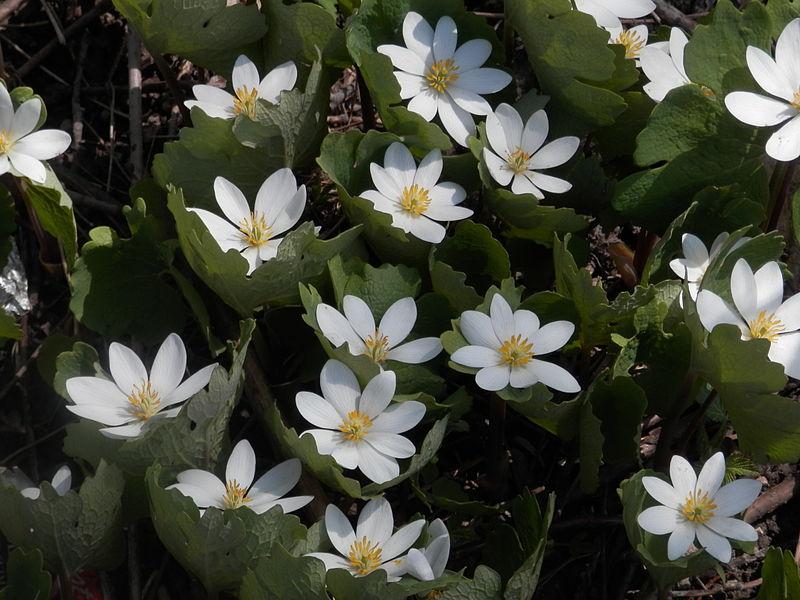Bloodroot has a long reputation for treating skin cancer, from Native American healers to 21st century dermatologists.
Bloodroot is an herb native to the eastern United States. It is widely planted as an ornamental, but has become endangered in the wild. It has a daisy-like flower that blooms in early spring and a round, ornate leaf. The name comes from the rhizome that appears to ooze blood when cut.






